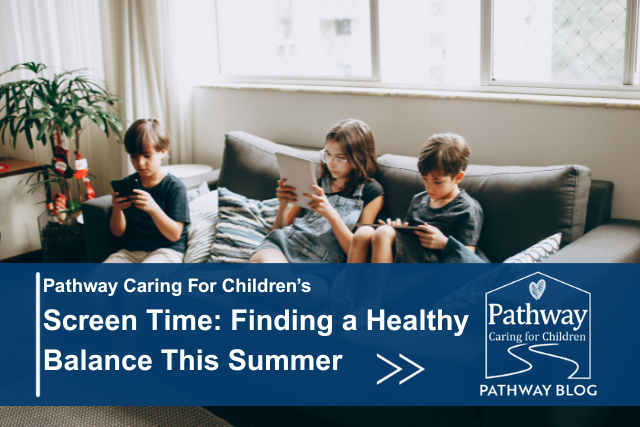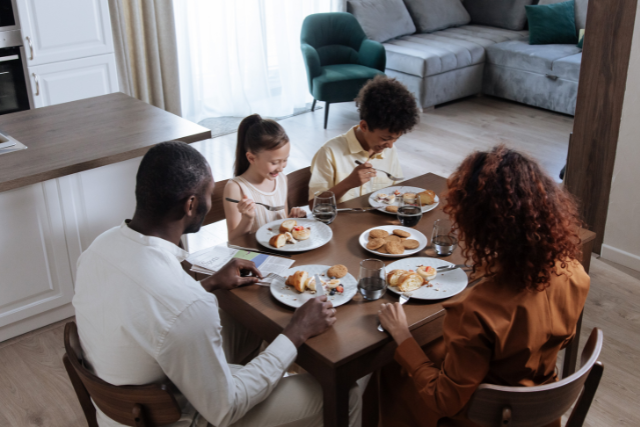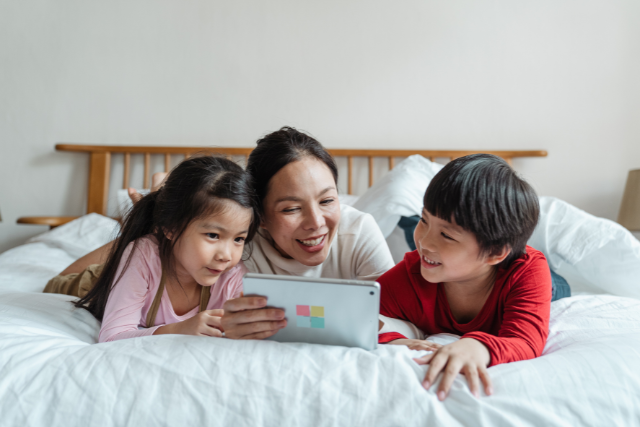
Screen Time & Mental Health: Finding a Healthy Balance This Summer
Summer brings longer days, looser schedules, and plenty of time at home. For kids and teens, that often means more screen time—streaming shows, scrolling TikTok, playing video games, or texting with friends.
But many caregivers worry: How much is too much? Is all this screen time hurting my child’s mental health?
At Pathway Caring for Children, we believe in balance, not guilt. Technology is part of our kids’ world—and it’s not all bad. The key is helping children and teens use screens in healthy, intentional ways that support their mental and emotional wellbeing.
The Link Between Screen Time and Mental Health
Research shows that excessive or unregulated screen time—especially passive use like endless scrolling—can affect:
- Mood and anxiety
- Sleep patterns
- Attention and focus
- Self-esteem and body image (especially for teens)
Kids in foster care or those with a history of trauma may be especially sensitive to screen-related triggers like violence, rejection, or unrealistic social comparisons.
But not all screen time is harmful. In fact, some digital tools offer connection, creativity, and even healing when used wisely.
Signs That Screen Time Might Be Affecting Your Child
It’s not just about the hours—it’s about the impact. Watch for:
- Irritability or meltdowns when asked to unplug
- Withdrawing from family or in-person activities
- Changes in sleep (especially trouble falling asleep or waking up tired)
- Increased anxiety, sadness, or negative self-talk after being online
- Less interest in things they used to enjoy
If you’re seeing these signs, it might be time to reset the balance.
6 Ways to Support a Healthier Relationship with Screens This Summer
Routines don’t have to be rigid. In fact, the most helpful ones are simple, flexible, and consistent. Here are a few ideas:
1. Set Reasonable, Flexible Limits
Instead of strict hour-counting, aim for clear guidelines like:
- No screens before breakfast
- Breaks every 30–60 minutes
- Screen-free meals and family time
- Devices off 1 hour before bed

Let your child know the “why” behind these boundaries—it’s about helping their brain and heart feel better, not punishment.
2. Create Screen-Free Zones
Bedrooms, dinner tables, and the car are great places to unplug. Create screen-free spaces where connection or calm is the priority.
3. Make a Summer Media Plan Together
Kids do better with a say in the plan. Sit down and map out:
- When screens are okay
- What kinds of content are allowed
- Fun, offline activities to balance it out
This gives structure and helps avoid battles.
4. Offer Alternatives That Compete With Screens
Think boredom is the enemy? Not always. Boredom can spark creativity—if we give kids other tools:
- Art supplies, puzzles, books, music, outdoor games
- Cooking, gardening, journaling
- Free local events or volunteer opportunities
5. Model Healthy Habits Yourself
Kids notice everything. If you’re constantly checking your phone or watching TV in the background, they’ll follow your lead.
Try this: have a “family unplugged hour” each day and do something screen-free together.
6. Watch with Them When You Can
Join them for a YouTube video, play a game together, or talk about what they’re watching. These moments help you connect and turn passive screen time into relational time.

When to Seek Support
If you’re feeling overwhelmed or your child is struggling emotionally this summer, it’s okay to reach out. At Pathway, we offer trauma-informed therapy and mental health support tailored to children, teens, and families.
No one expects you to have all the answers—and you don’t have to navigate it alone.
Final Thoughts
Screens aren’t the villain—but they do require balance. With a little structure and a lot of compassion, you can help your child enjoy technology and protect their mental health this summer.
Remember: connection beats control. When kids feel heard, supported, and safe, they’re much more likely to build healthy screen habits that last.
Need Mental Health Support This Summer?
Explore our youth mental health services or contact our team for more personalized support. We’re here to help your family thrive.